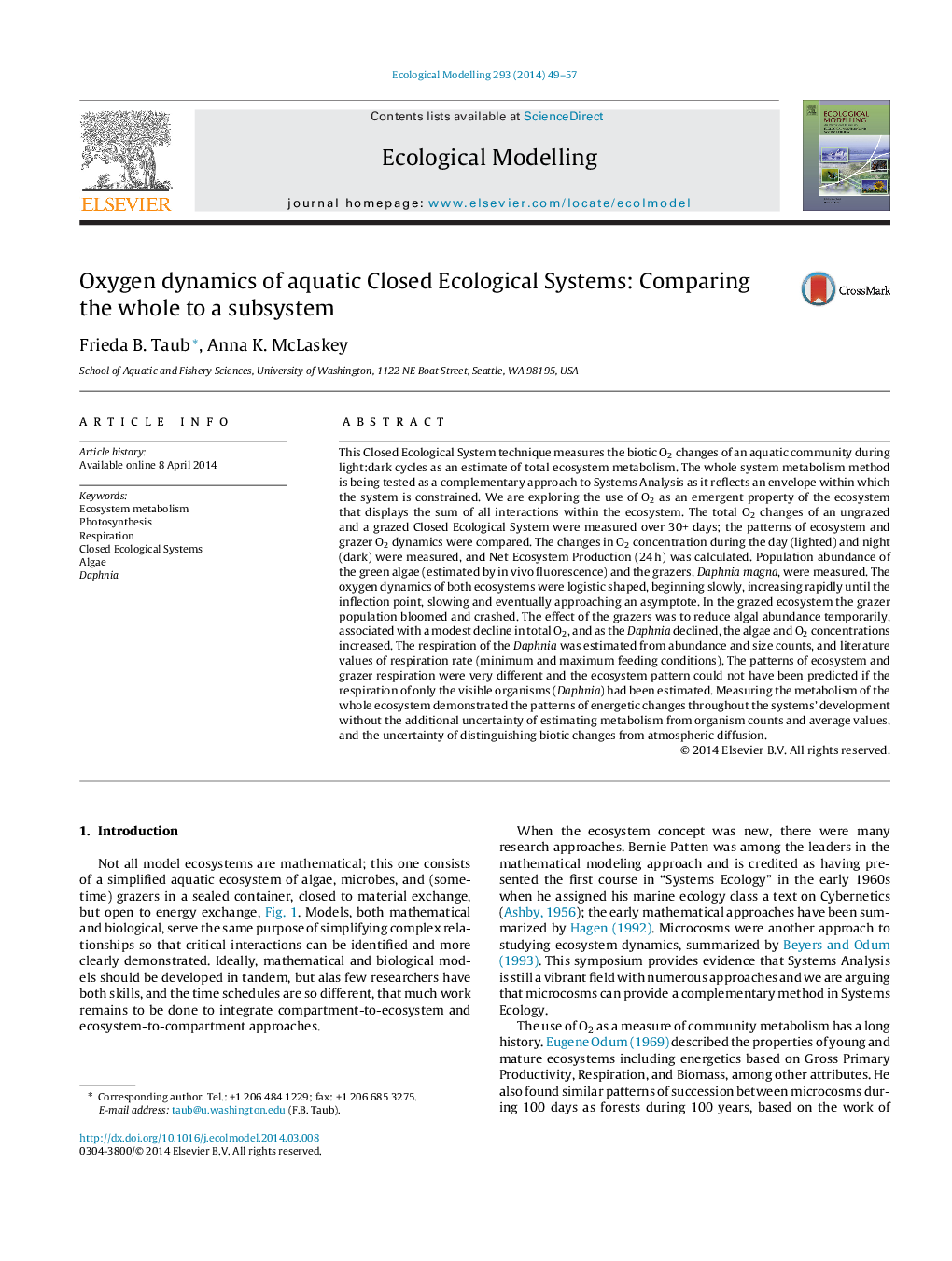| Article ID | Journal | Published Year | Pages | File Type |
|---|---|---|---|---|
| 4375791 | Ecological Modelling | 2014 | 9 Pages |
•Closed Ecological Systems (grazed and ungrazed) demonstrated ecosystem properties and are feasible complements to Systems Analysis.•Most of the O2 dynamics were caused by microscopic algae and heterotrophic bacteria.•The O2 increased in a logistic fashion, eventually reaching an asymptote, implying a balance between O2 produced during the lighted phase and O2 used during the dark phase.•Grazer populations bloomed and crashed but did not persist; their metabolism was not a constant proportion of the total metabolism.•Grazers temporarily modified the balance between O2 production and consumption and during their peak population, shifted the ecosystem to heterotrophy.•Most of the O2 dynamics were caused by microscopic algae and heterotrophic bacteria.
This Closed Ecological System technique measures the biotic O2 changes of an aquatic community during light:dark cycles as an estimate of total ecosystem metabolism. The whole system metabolism method is being tested as a complementary approach to Systems Analysis as it reflects an envelope within which the system is constrained. We are exploring the use of O2 as an emergent property of the ecosystem that displays the sum of all interactions within the ecosystem. The total O2 changes of an ungrazed and a grazed Closed Ecological System were measured over 30+ days; the patterns of ecosystem and grazer O2 dynamics were compared. The changes in O2 concentration during the day (lighted) and night (dark) were measured, and Net Ecosystem Production (24 h) was calculated. Population abundance of the green algae (estimated by in vivo fluorescence) and the grazers, Daphnia magna, were measured. The oxygen dynamics of both ecosystems were logistic shaped, beginning slowly, increasing rapidly until the inflection point, slowing and eventually approaching an asymptote. In the grazed ecosystem the grazer population bloomed and crashed. The effect of the grazers was to reduce algal abundance temporarily, associated with a modest decline in total O2, and as the Daphnia declined, the algae and O2 concentrations increased. The respiration of the Daphnia was estimated from abundance and size counts, and literature values of respiration rate (minimum and maximum feeding conditions). The patterns of ecosystem and grazer respiration were very different and the ecosystem pattern could not have been predicted if the respiration of only the visible organisms (Daphnia) had been estimated. Measuring the metabolism of the whole ecosystem demonstrated the patterns of energetic changes throughout the systems’ development without the additional uncertainty of estimating metabolism from organism counts and average values, and the uncertainty of distinguishing biotic changes from atmospheric diffusion.
